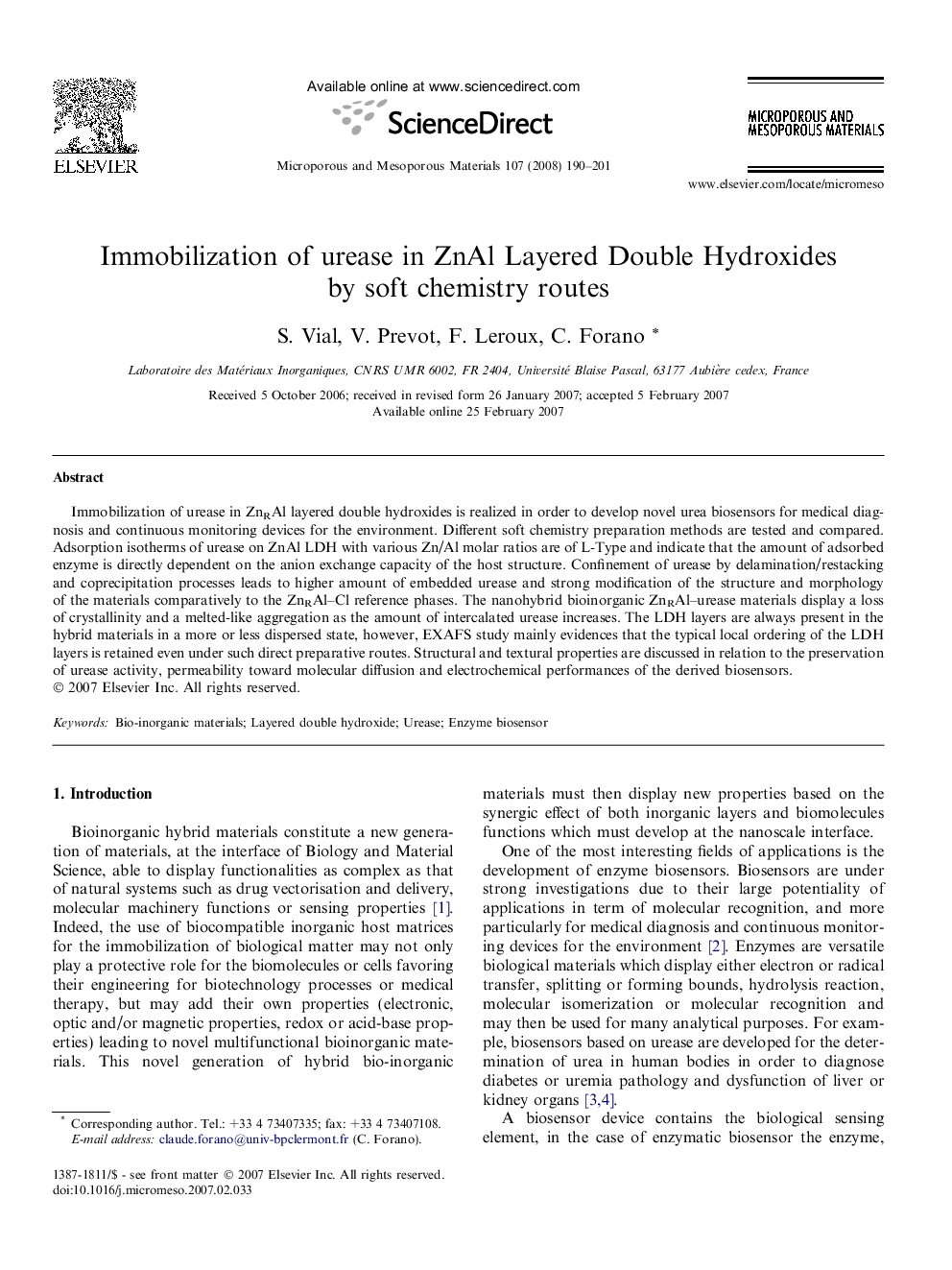| Article ID | Journal | Published Year | Pages | File Type |
|---|---|---|---|---|
| 76639 | Microporous and Mesoporous Materials | 2008 | 12 Pages |
Immobilization of urease in ZnRAl layered double hydroxides is realized in order to develop novel urea biosensors for medical diagnosis and continuous monitoring devices for the environment. Different soft chemistry preparation methods are tested and compared. Adsorption isotherms of urease on ZnAl LDH with various Zn/Al molar ratios are of L-Type and indicate that the amount of adsorbed enzyme is directly dependent on the anion exchange capacity of the host structure. Confinement of urease by delamination/restacking and coprecipitation processes leads to higher amount of embedded urease and strong modification of the structure and morphology of the materials comparatively to the ZnRAl–Cl reference phases. The nanohybrid bioinorganic ZnRAl–urease materials display a loss of crystallinity and a melted-like aggregation as the amount of intercalated urease increases. The LDH layers are always present in the hybrid materials in a more or less dispersed state, however, EXAFS study mainly evidences that the typical local ordering of the LDH layers is retained even under such direct preparative routes. Structural and textural properties are discussed in relation to the preservation of urease activity, permeability toward molecular diffusion and electrochemical performances of the derived biosensors.
